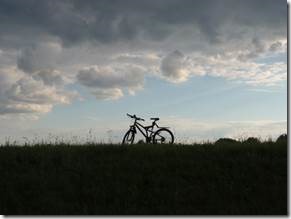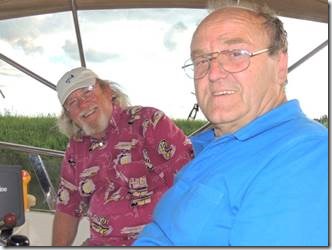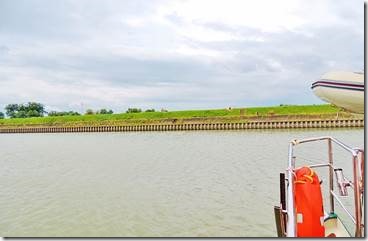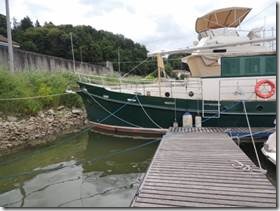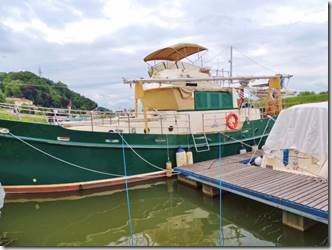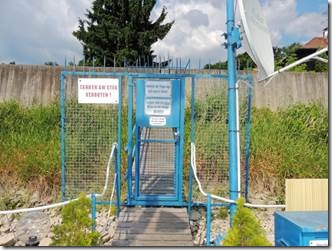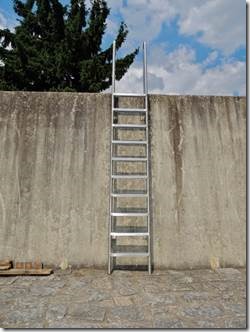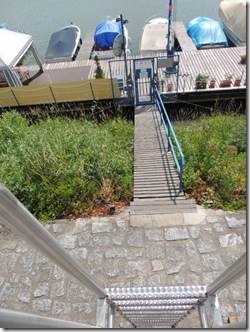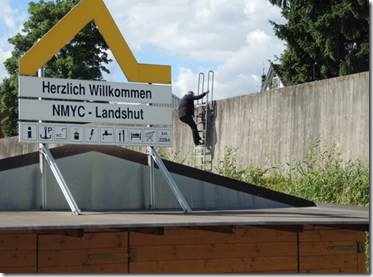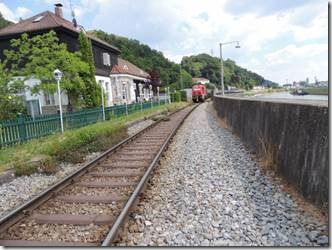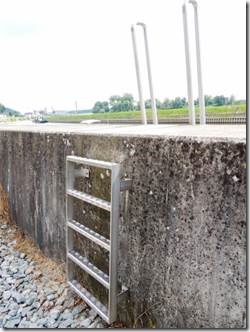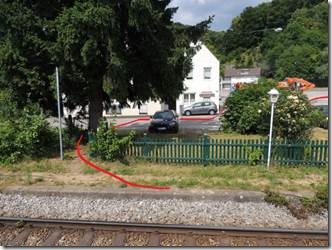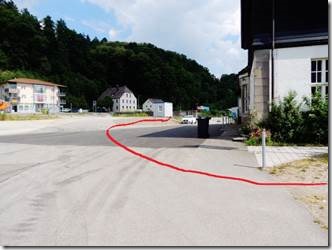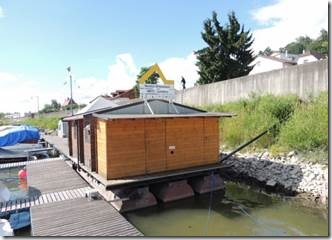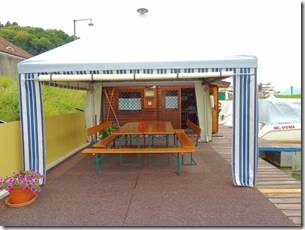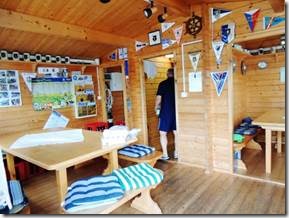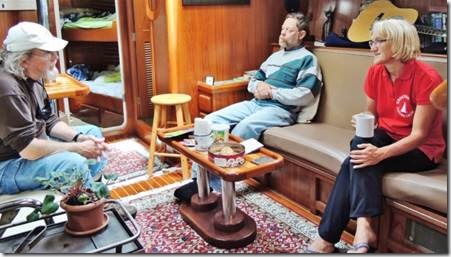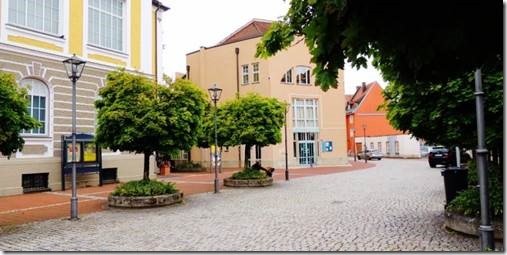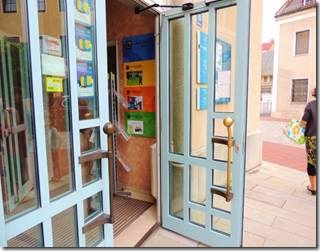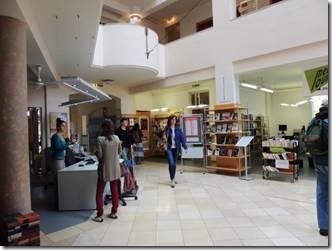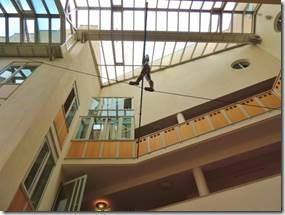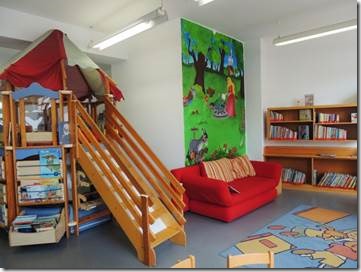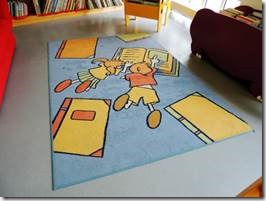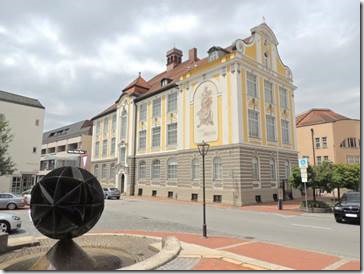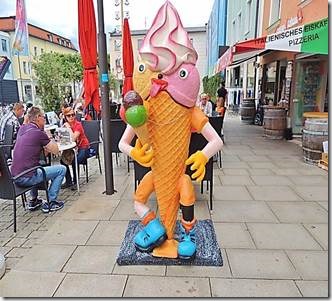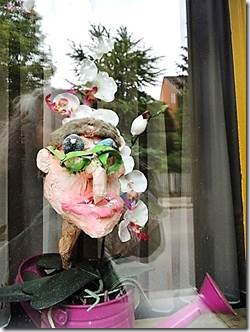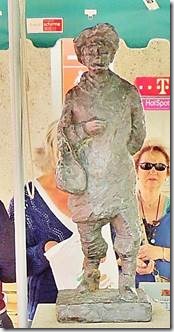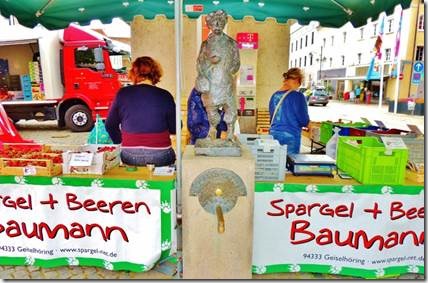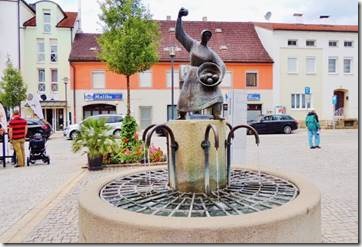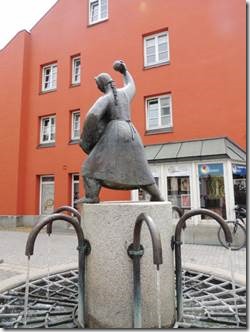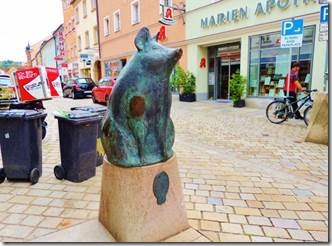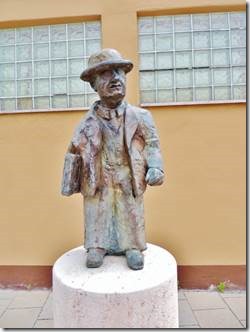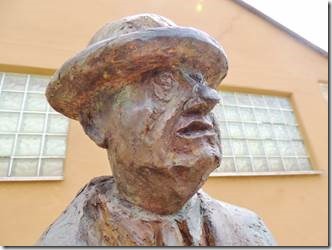NMYC Yacht Club, Deggendorf
Guten Tag,
Tomorrow we’re going to talk with the kind Port Master and ask his opinion about the river depths. Our info leads us to believe the river is too shallow. But our AIS shows really large cargo ships passing Deggendorf going down river. So we’ll see. The weather forecast shows rain mid-week and hopefully we’ll get it and a lot of it.
We’re certainly getting to know Deggendorf. Today while we were out for a stroll I checked the library hours and will visit to flip through some art books. Randal and I stopped in the other day and it is a very nice library.
This email is about our day in the Bavarian National Forest.
Ru
Bavarian Forest National Park
|
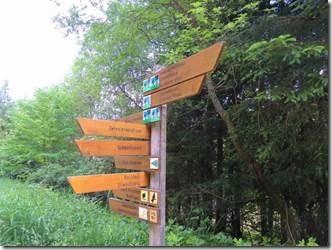
We followed the buzzard path.
Trails are very well marked especially when 3 pairs of eyes are looking.
|
|
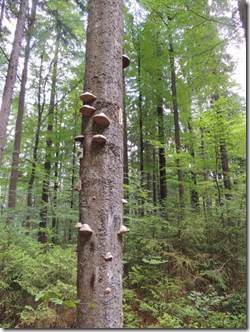 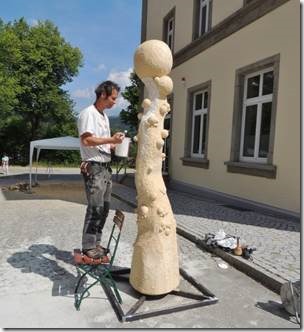
We passed this tree covered with what looked like very solid fungi and it reminded me of the artist I’d talked to in Bayerisch Eisenstein at the art gallery just near the trail. I believe he said it was ash. He has spent time in the US with different tribes of Native Americans. Unfortunately the gallery wasn’t open when we passed by.
The long awaited art gallery, Kunsträume grenzenlos, https://de-de.facebook.com/KunstraumeGrenzenlos opens its doors on Sunday 28th July 2013. With over 600 m2 of gallery space visitors will be able to enjoy works by contemporary painters, graphic artists, sculptors, glassmakers and more from both sides of the border as well as retrospectives of older artists from the region.
The first exhibitions, until 11th November, are by reknowned artists; Walter Mochizuki (1913-1999), co-founder of the Donau-Wald-Gruppe (artists association), Czech painter Jindřich Bilek, Vit Pavlik and the sculptor Václav Fiala.
There is also a gallery shop with a selection of local produce, regional craft products in glass or wood and more.
The gallery is located 100m from the German/Czech border next to the village train station at; Bahnhofstrasse 52, 94252 Bayerisch Eisenstein.
http://bavarianholidays.co.uk/
|
|
We’d left DoraMac and walked to the train station which was a hike itself. The train trip was 50 minutes. We spent a bit of time looking for trail information, buying water, visiting with the sculpture and finally starting our hike at 10:40. We hiked through the woods aiming for lunch at the Schwellhausl Inn.
|
|
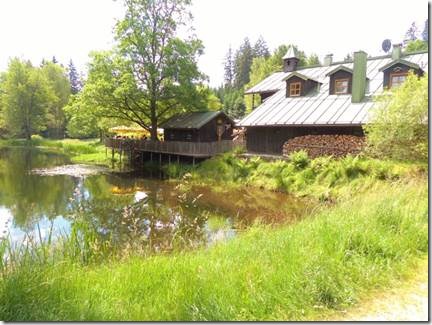
Schwellhäusl Inn for lunch.
“In our historic inn "Schwellhäusl", a popular destination among Zwieselerwaldhaus ArberLand, Bayerischer Wald, in the middle of National Park Bavarian Forest, you can wonderfully relax from everyday stress.
We pamper our guests with bavarian "Brotzeiten*", spicy lunch, coffee and cakes. (*=little solid bavarian snacks)”
http://www.schwellhaeusl.de/en/
|
|
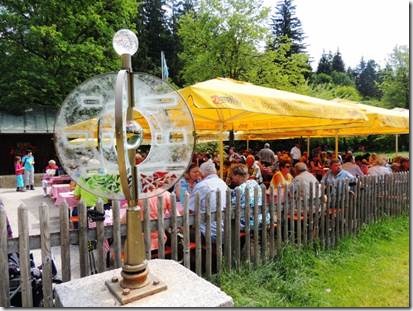
There was a huge lunch crowd so we shared a table which is lots of fun because you get to chat with people who are usually quite friendly.
This glass sculpture had both Hebrew and German and my guess, “The Ten Commandments.”
|
|
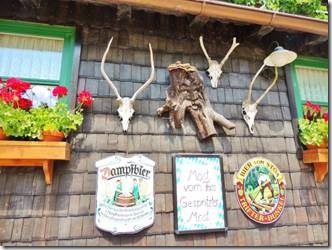 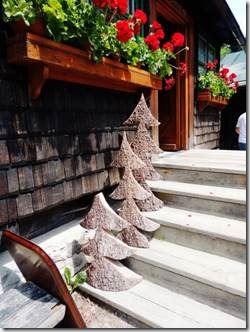
Carved wood and deer antlers. A German version of the Peaks of Otter and Maybry Mill on the Blue Ridge Parkway.
|
|
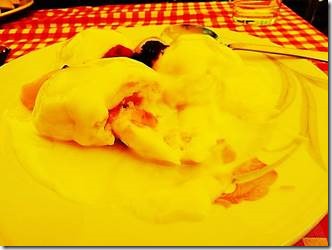
Not Maybry Mill Buckwheat Pancakes.
Heavy duty buckwheat pancakes to start off an 80 mile bike ride weren’t a good idea and neither were these dumplings. I was trying to avoid the heavy meat dishes! None of us was exactly sure what it would be except for the vanilla sauce and the marmalade. I was thinking it might be some kind of noodle. But it was really three large servings of steamed bread with marmalade in the center surrounded by a thin vanilla pudding. I ordered it “by mistake” but the couple sharing the table ordered it on purpose. An acquired taste maybe. Or maybe this wasn’t such a prime example.
Germknödel ([ˈɡɛɐ̯mˌknøːdl̩], Austrian German for yeast dumpling) is a fluffy (mine was definitely not fluffy) yeast dough dumpling with a mix of poppy seeds and sugar, filled with spicy plum jam and melted butter on top, occasionally – even though less traditional – also served with vanilla cream sauce. It is a culinary speciality of Austria and Bavaria. The dish is served both as a dessert and as a main course.
Germknödel is usually a spherical or bun-shaped dessert. The dessert’s main ingredient is a yeast dough with sugar and fat, usually butter, added to the dough. The dumpling is filled with Powidl, a sweet and spicy plum jam. The dumpling is steamed and then served still hot with either melted butter or vanilla dessert sauce, and topped with crushed poppy seeds and sugar.
The main difference between Germknödel and a related dish, Dampfnudeln, is that the former is either steamed or boiled whereas the latter is cooked in a deep pan. Wikipedia
|
http://www.nationalpark-bayerischer-wald.de/
In the area around the Gro?er Falkenstein protected areas came into being a very long time in the past, in places more than 200 years ago, and which are today among the most important and oldest remnants of primeval forest in central Europe. For visitors to the national park they can be counted amongst the big attractions alongside the mountain summits and the pastures (Schachten) in the north western part of the national park. They are connected by particularly attractive hiking trails.
We are delighted that you are visiting the forest wilderness of the Bavarian Forest around the Lusen, Rachel and Falkenstein mountains; it’s a forest in which nature decides how it develops and in which the fascinating interplay between animals and plants runs its own course. As in ancient forests, life and death are inseparably linked; one brings about the other.
As Germany’s oldest national park, nature has flourished here for more than 40 years pretty much undisturbed by human interventions. Forests, meadows, rocks and mires form a unique and captivating natural landscape. You can experience this fascinating and unparalleled forest nature in all its diversity with us.
Bavarian Forest, Bohemian Forest, Šumava are differing names for one and the same ancient mountainous region in central Europe, the use varying according to cultural, geographical or historical reference. A mighty bulwark of hard gneiss and granite rock, it divides Bavaria from Bohemia and the catchment area of the Danube from that of the Vltava. State and linguistic borders between Germany and the Czech Republic run along its main ridge, as does the boundary between the Bavarian Forest and Šumava National Parks.
The landscape with its rounded and long mountain domes, the gently climbing slopes, plateau-like heights and hollow-like valleys are evidence of a long history of weathering and shaping through the ice ages.
http://www.nationalpark-bayerischer-wald.de/
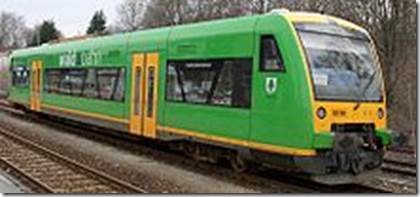
Wikipedia photo
The train was very comfortable with roomy seats and a “WC.” Folks had bikes, dogs, and backpacking gear.
“The Bavarian Forest Railway (Bayerische Waldbahn often just called the Waldbahn) links the heart of the Bavarian Forest around Regen and Zwiesel to Plattling and the Danube valley on one side, and the Czech Republic through Bayerisch Eisenstein on the other. In the Danube valley it forms a junction with the Nuremberg–Regensburg–Passau long distance railway and, to the south, regional lines to Landshut and Munich.”
http://en.wikipedia.org/wiki/Bavarian_Forest_Railway

